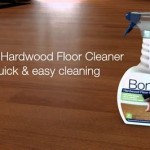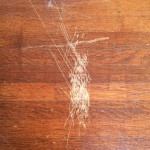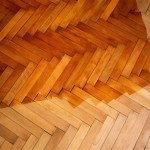Killing Fleas on Wood Floors
Fleas are tiny, parasitic insects that can infest homes, causing discomfort and potential health problems for both people and pets. Wood floors, with their cracks and crevices, can provide prime hiding spots for fleas, making them difficult to eliminate. This article will provide a comprehensive guide to effectively kill fleas on wood floors, covering various methods and important precautions.
Thorough Vacuuming and Cleaning
The first step in eliminating fleas from wood floors is thorough cleaning. Regular vacuuming is crucial, as fleas and their eggs can easily be trapped in carpets and rugs. Pay special attention to areas where pets spend most of their time, such as under furniture and near doorways. After vacuuming, empty the dust bag or canister outside to prevent fleas from escaping back into your home.
In addition to vacuuming, wiping down wood floors with a damp cloth or mop is essential to remove any remaining flea debris. Use a mild detergent specifically designed for wood floors to effectively clean and sanitize the surface.
Using Flea Sprays and Treatments
A variety of flea sprays and treatments are available on the market to kill fleas and their eggs. However, it is crucial to select products specifically designed for wood floors and to follow the manufacturer's instructions carefully. Some common types of flea sprays and treatments include:
- Aerosol sprays: These sprays are applied directly to the wood floor, killing fleas on contact. Make sure to choose a spray formulated for use on wood surfaces and ventilation is essential during and after application.
- Flea bombs: These foggers release a fine mist that fills the entire room, killing fleas and their eggs. Use these cautiously as they can be harmful to pets and humans if not handled correctly. Always follow the instructions carefully and allow the room to air out completely before re-entry.
- Diatomaceous earth: This natural powder is made from fossilized algae and is effective in killing fleas by dehydrating them. Sprinkle diatomaceous earth on the wood floors and allow it to sit for several hours before vacuuming it up. Diatomaceous earth is generally safe for pets, but it is advisable to consult a veterinarian before using it around animals.
Addressing Potential Flea Sources
While tackling the wood floors is important, addressing potential flea sources is essential for effective flea control. Fleas can easily infest pets, carpets, furniture, and even the yard. If you have pets, ensure they are treated with flea medication regularly. Vacuum carpets and rugs frequently, and consider using a professional carpet cleaning service.
Inspect furniture for signs of fleas, particularly under cushions and in upholstery. Treat furniture with an appropriate flea spray if necessary. Finally, inspect your yard for signs of fleas, such as flea dirt or swarms of fleas, and take steps to eradicate them, such as using an insecticide that is safe for your lawn.
Preventative Measures
Once you have successfully eliminated a flea infestation, it is crucial to implement preventative measures to avoid future outbreaks. Regularly vacuum your floors and carpets, and ensure pets are treated with flea medication. Also, consider using flea-repelling products, such as essential oils or flea collars.
If you suspect a flea infestation, it is always advisable to consult a professional pest control company for expert advice and treatment options. They can provide comprehensive solutions to eliminate fleas from your home and prevent future infestations.

How To Remove Fleas From Wooden Floors Wood And Beyond Blog

Flea Problem On Wood Floors Youtube

Are Your Hardwood Floors Attracting Fleas

Can Fleas Live On Hardwood Floors Pest Source

Wood Floors And Fleas

Fleas Dtlavets

Homeowner Shares Perfect To Get Rid Of Fleas In Hardwood Floors You Just Saved Our Home Six Pets

Are Your Hardwood Floors Attracting Fleas

How To Stop A Flea Infestation Naturally Dg Cedar Oil

How To Get Rid Of Fleas On Hardwood Floors Without Harming The Wood







